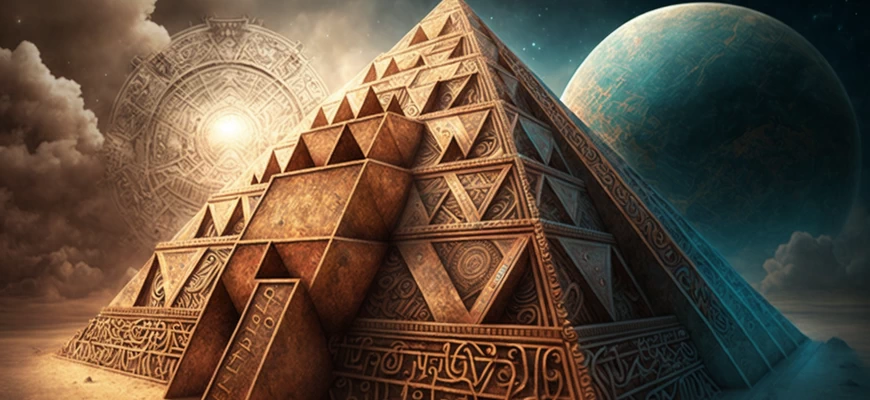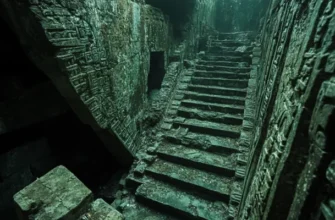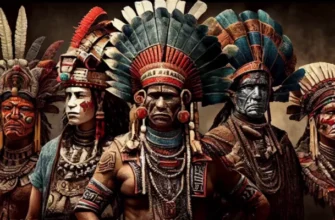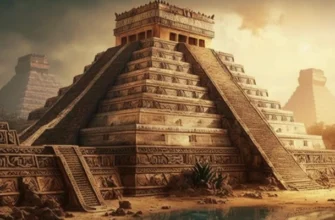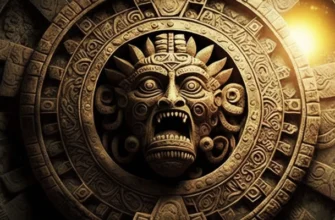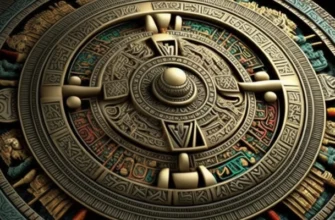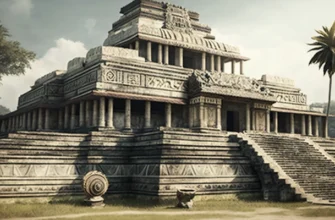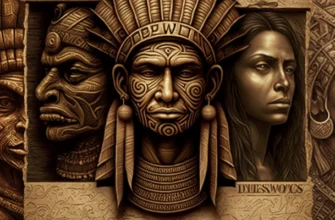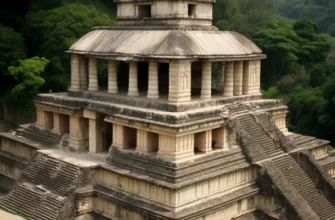The Mayan civilization developed in central America from 2000 B.C. to 1500 A.D. They had a complex system of religious and scientific beliefs, including astronomy, mathematics, and medicine. The Maya developed accurate calendars that are still used today, as well as a mathematical number system with numbers from 0 to 19. They were also familiar with herbal healing, and Mayan physicians were able to perform surgeries and treat broken bones. In addition to their scientific achievements, the Maya were known for their art, including painting and architecture. In general, Mayan science was quite advanced and sophisticated for its time, and its achievements influenced the science and culture of Central America.
- Mayan religious beliefs
- Astronomy
- Solar calendar
- Astronomical observations
- Beliefs about the starry world
- Mathematics
- Geometry
- Astronomical calculations
- Medicine
- Treatment and beliefs
- Knowledge of anatomy
- Scientific achievements of the Maya
- Agriculture
- Architecture and engineering
- Art
- Writing
- Painting
- Music and dance
- Conclusions
Mayan religious beliefs
Religious beliefs were an integral part of the Mayan civilization. They believed in polytheism and had a complex system of religious rituals that included sacrifices, dance, and music. One of the most famous Mayan gods is Kukulkan, who was the god of wind and knowledge. They also believed in the rebirth of the soul and reincarnation, so the rites were accompanied by funeral ceremonies and monuments. The Maya religious beliefs were reflected in art, architecture, and writing, and they left an indelible mark on Central American culture.
Astronomy
Mayan astronomy is a branch of science that studies the cosmic knowledge and observations that were made by the Mayan civilization in Mesoamerica. The Maya were known for their exploration of space and understanding of astronomy. They used cosmic observations to calculate calendars and for religious rituals.
The Maya observed the movements of the sun, moon, and planets such as Venus and Mars. They also understood that the earth rotated on its axis and that this led to the change of seasons. The Maya used their knowledge of astronomy to calculate their calendar, which was different from the Western calendar.
One of the most prominent Mayan astronomical observations was their observation of Venus. The Mayans are known for their accuracy in predicting the course of Venus, including the 584-day cycle they knew, which was used to determine the days in their calendar.
In general, astronomy was an important element of Mayan culture and helped them in their calendrical, religious, and social practices. Their knowledge and observations help us to better understand astronomy and other sciences today.
Solar calendar
The Mayan solar calendar, also known as the Haab, was one of three calendars used in Mesoamerica by the Mayan civilization. It consisted of 365 days and was used to determine the years. Each year consisted of 18 months of 20 days each, with an additional five days called “unlucky” days, which were considered a time of change and visual reorganization of the cosmos.
The Haab differed from other Maya calendars, such as the Tzolkin and Long Count, which were used to define shorter periods of time, such as days, months, and decades. The Tzolkin corresponded to a religious calendar and was used to predict good times in a person’s life, while the Long Count was the longest-lasting calendar, covering the period from 3114 AD to 2012 AD.
The Haab was important to the Maya because it helped them determine when to hold religious and social events, taking into account natural cycles and rhythms. It was also used to track changes in harvests and other natural phenomena. The Mayan solar calendar is an important cultural and historical source that helps us better understand this fascinating civilization and its ability to perceive and reproduce natural phenomena.
Astronomical observations
The Maya were known for their highly accurate astronomical observations, which were reflected in their calendars, architecture, and other aspects of their culture. They knew that the sun, moon, and five visible planets move through the celestial sphere, and they were able to predict solar and lunar eclipses, astronomical cycles, and rhythms.
For example, Mayan architecture was made in such a way that stellar configurations coincided with certain structures and shrines. For example, the Pyramid of Kukulkan in Chichen Itza was located in such a way as to reflect the light and shadow effects that occur during the spring and autumn equinoxes. This allowed the Maya to accurately determine the dates associated with changes in the seasons and agricultural rhythms.
In addition, the Maya created the Long Count, a calendar that reflects the period from 3114 to 2012 AD. This calendar, which includes thirteen baktuns, consists of more than 1.87 million days. Although this calendar was discontinued in 2012, it continues to be used to study Mayan astronomy and culture.
In general, Mayan astronomical observations were important to their lives because they helped determine the seasons, regulate agricultural activities, and establish religious holidays. They understood natural cycles and rhythms and used this information to ensure the sustainability of their community. For example, they knew when to sow and harvest to ensure that they would have enough food for the next year.
In addition, the Maya also believed that certain astronomical phenomena were linked to deities and natural forces that were important to their religious and cultural identity. For example, their calendar is linked to the story of the creation of the world and the deities that govern various aspects of life.
The Maya also had a large number of astronomical instruments, such as prisms, which they used to study the movements of the Sun and Moon. They also understood the star map and used it for navigation and warfare.
All of this knowledge and technology that the Maya possessed confirms their high understanding of astronomy and its impact on life and culture. This shows the complexity and sophistication of their civilization and gives us a better understanding of our own history and science.
Beliefs about the starry world
The Maya had their own unique belief system related to the starry world. They believed that each star had its own spirit and influenced people’s lives. The Maya observed the stars to determine the most favorable time for various events, such as weddings or military campaigns.
The Maya also believed in the existence of the “Dark Zone”, which was a world of underground deities and spirits. They believed that this world was underground and accessible only to the dead, who could go there through certain rituals and ceremonies.
One of the most well-known astronomical symbols in Mayan culture is the “Pattern of Stars”, which is a kind of instruction for creating ritual calendars that were used to determine the auspicious days for various rituals and ceremonies.
It is also known that the Maya were known for their astronomical accuracy and knowledge of the movements of the planets and stars. For example, they studied the cycles of Venus and had complex calendars that took into account the movement of the planets.
All of these beliefs and knowledge confirm the importance of astronomy to Mayan culture and their understanding of the connection between the starry world and human life.
Mathematics
The Maya had an impressive knowledge of mathematics and numbers. They used a special number system that was based on the number 20, not 10 as in the modern number system.
In the Mayan number system, numbers were represented by special symbols that consisted of dots and sticks. Every five single symbols were represented by a larger symbol, which meant the number 20. For example, the number 32 was represented as two large sticks followed by two small sticks.
The Maya also developed a system of mathematical symbols that were used to write numbers and mathematical formulas. This system included symbols for addition, subtraction, multiplication, and division, as well as special symbols for zero and tens.
In addition to the number system, the Maya were also known for their mathematical achievements in geometry and astronomy. For example, they understood that the Earth was a sphere and knew the value of pi to several decimal places.
Overall, Mayan mathematics was an impressive achievement that enabled them to create accurate calendars and understand the world around them with great precision and complexity.
Geometry
Mayan geometry is known for its complexity and precision, as well as the use of highly developed mathematical concepts and algorithms. One of the main principles of Mayan geometry was the idea that the universe is a mathematical structure that can be studied and understood using geometric methods.
One of the most famous achievements of Mayan geometry is the great pyramid complex at Chichen Itza, which consists of several pyramids and structures built over tens of thousands of square meters. It was built with the help of complex geometric calculations and astronomical calculations that allowed the Maya to accurately determine the position of the sun and stars.
The Maya also studied the geometry of the sphere, and developed a complex coordinate system that was used to determine the position of bodies on the celestial sphere. They understood that the Earth was spherical and studied the movements of the planets, stars, and other celestial objects.
Mayan geometry used concepts such as proportions, symmetry, triangles, circles, and other geometric shapes. The Maya created a complex geometric symbolism and studied geometric proportions and relationships between different elements of their structures and ritual objects.
In general, Mayan geometry was very highly developed and well suited to the needs of their culture and technology. It was used in architecture, art, astronomy, mathematics, and other areas of Mayan activity. It allowed them to create complex buildings and structures with a high level of precision and aesthetic beauty.
In addition, Mayan geometry was also important in the religious life of this civilization. The Maya believed that the universe was a mathematical structure, and therefore geometry was a kind of key to understanding the divine order. They used geometric symbols and proportions in their rituals and ceremonies, as well as in other aspects of religious life.
In general, Mayan geometry is a remarkable achievement of this civilization and is far from being less important than other aspects of their culture and science. It shows the high level of development and complexity of Maya thought and their capacity for highly developed mathematical thinking and creativity.
Astronomical calculations
Maya astronomical calculations were quite accurate and were used to determine various calendar cycles, including the Lunar and Solar calendars.
The Mayan calendar consisted of three different cycles: the cycle of the day (Tzolk’in), the cycle of the year (Haab’), and the Long Count.
The day cycle consisted of 260 days, each with a unique name and number. The cycle of the year consisted of 365 days and had 18 months of 20 days each, as well as 5 “unlucky” days that were considered unlucky.
The long counter was used to define long periods of time, with counting starting around 3114 BC. The long counter consisted of different “numbers” that corresponded to different periods of time.
The Maya also used a special tool called “blocks” to help them track the movement of planets and stars in the sky. These blocks were made of various materials such as stone, wood, and bone.
Other Mayan astronomical calculations included determining the exact length of the solar year (about 365.2422 days) and the movement of the moon (about 29.5302 days). They also created detailed maps of the celestial world and studied the movements of the planets.
All in all, Mayan astronomical calculations were impressive for their level of accuracy and complexity and remain quite interesting to research to this day.
Medicine
Mayan medicine was advanced for its time and included a variety of methods of treating and preventing disease.
The Maya used many plants to treat various diseases. They had a wide arsenal of medicinal plants and roots that were used to boost immunity, treat various diseases, and provide pain relief. Some of these plants are still used today to treat diseases, for example, the Guaiacum officinale tree was used to treat rheumatism and the Narcissus spp. was used as a sedative.
In addition to herbal medicine, the Maya used massage and physical therapy to treat various diseases and injuries. They also used haze to calm the patient and get rid of parasites.
The Maya also used surgical methods, for example, they performed eye surgeries and used a stone knife to remove stones from the urinary tract.
Mayan medicine had a developed diagnostic system based on examining the patient, his or her pulse, and various symptoms of the disease. In addition, the Maya were well acquainted with dietetics and believed that nutrition was an important component of health.
In general, Mayan medicine was quite advanced and had many ways to treat various diseases and injuries. Many of these methods remain interesting for research and are still used in folk medicine in certain countries.
One of the most famous methods of Mayan medicine was Mayan cabala, which was based on the belief that different parts of the body are connected to different energy centers. Using massage, acupuncture, and other treatments, the Maya tried to restore the balance of energy in the patient’s body.
Mayan medicine also developed a system of hygiene and disease prevention, which included recommendations for nutrition, physical activity, and hygiene. The Maya believed that some diseases could be prevented by proper lifestyle and nutrition.
Treatment and beliefs
The Maya had their own system of treatment, which included the use of various herbs, massage, magical rituals and other methods. According to Mayan beliefs, disease arose from an imbalance of internal energies, and it could be cured by restoring this balance.
In Mayan treatment, much attention was also paid to the use of the tropane technique, which involved the use of plants containing alkaloids. For example, one of these plants, durman, contained atropine, which was used for pain relief and pain reduction.
The Maya had their own priests who played an important role in healing. They believed that the human soul and body were inseparable, and that the disease could be cured only if the balance between these aspects of human life was restored. Therefore, priests often used various magical rites to restore this balance.
In general, the Maya had a rather complex system of healing that combined physical, spiritual, and magical methods. They believed that it was important not only to treat the body but also the soul to achieve complete harmony.
Knowledge of anatomy
The Maya were an ancient people who lived in Mesoamerica from about 2000 BC to the 15th century. The Maya had a developed system of knowledge about anatomy, which included detailed knowledge about the structure of the human body, as well as the functions of various organs and systems.
The Maya studied anatomy to understand the physical causes of disease and injury, as well as to treat illness and injury. They understood that the human body is made up of different systems, such as bone, muscle, nervous, and digestive, respiratory, and circulatory.
The Maya also had quite advanced surgery, they performed bone surgery to fix fractures and other injuries, and they also performed eye surgery, which was more complex and risky. They also used herbs and other natural remedies to treat illnesses and injuries.
The Maya had a very advanced knowledge of dental anatomy and dentistry. They made dentures from various materials such as gold and jasper and used them to replace lost teeth.
In general, the Maya were very intelligent and exploratory people who had a high level of knowledge about the anatomy and medicine of their time.
Scientific achievements of the Maya
The Maya were a fairly advanced civilization with a high level of scientific development. Among their scientific achievements are the following:
Calendar. The Maya created an accurate calendar based on astronomical observations. Their calendar was much more accurate than the calendars used in Europe at the time.
Mathematics. The Maya were quite advanced in mathematics. They used a number system that was based on the number 20, not 10 like most other civilizations of the time. They also developed geometric systems that allowed them to calculate the areas and volumes of geometric shapes.
Medicine. The Maya were quite advanced in medicine. They had a high level of knowledge about anatomy, treatment of injuries and diseases, used natural remedies, and produced medical instruments.
Architecture. The Maya were known for their magnificent architecture. They built enormous pyramids, palaces, and city structures that remain amazing examples of engineering and architectural skill.
Writing. The Maya were among the first peoples to develop a written language in the Americas. They used a hieroglyphic system that allowed them to record a variety of information, including history, astronomy, and mathematics.
In general, the Maya made a significant contribution to the development of science and culture in the Americas. Their achievements continue to be researched and explored to this day. For example, a new tunnel was recently discovered in the pyramid of Kukulkan in southwestern Mexico, which provides an opportunity to expand knowledge of their architecture and engineering.
Mayan documents have also been found that contain information about cosmic events such as stellar explosions. These documents allow us to explore how the Maya perceived space and astronomy, and how they used this knowledge in their daily lives.
In addition, the study of Mayan medicine and their digestive remedies continues. Some of the treatments used by the Maya may be useful for modern medicine as well.
All of these studies allow us to better understand the Maya and their achievements in science, culture, and other fields of knowledge.
Agriculture
The Maya were an ancient civilization that developed in Southern Mexico, Guatemala, Belize, Honduras, and El Salvador about 2000 years ago. Agriculture played an important role in Mayan life, as they used the land to grow food crops.
The main crops the Maya grew were corn, beans, zucchini, tomatoes, peppers, and avocados. They also grew fruits such as bananas and pineapples. The Maya used a variety of farming methods, including terracing and irrigation techniques.
One of the most important aspects of Mayan agriculture was their irrigation systems. They built engineering structures such as canals and levels to direct water from rivers with high water levels to dry regions. This allowed the Maya to turn northern Yucatan, which is a very dry region, into one of the most fertile lands in the world.
It was also important to preserve the products obtained from agriculture. The Maya stored their food in large ceramic vessels and underground to prevent destruction due to weather or pests.
Agriculture was also an important part of Mayan religious rituals, as they believed that success in agriculture depended on pleasing the gods. Consequently, they often performed religious rituals to ensure abundant harvests and prosperity.
Architecture and engineering
Mayan architecture and engineering reflect the high level of technological development and cultural wealth of the ancient civilization. Among the most prominent structures are pyramids, palaces, city squares, balls, canals, and other engineering structures.
The Mayan pyramids were the main beliefs, as well as a place of rest and government. They were built of stalactite stone and consisted of several levels. The highest level was a shrine where religious rites were performed. The most famous Mayan pyramids are the Pyramid of the Heart and Kukulkan in Mexico.
Mayan palaces were also impressive structures with complex sewage and water supply systems. They consisted of several rooms, halls, and corridors that had their own cooling and ventilation systems. The most famous Mayan palaces are the Maha Palace in Palenque and the Tepanapa Palace in Mexico.
The Maya also had a developed engineering system for water supply and sewage. They built large canals and systems to collect water from the rain, which were used to irrigate the land and replenish water supplies. The Maya also used underground channels that provided access to water inside cities.
In terms of mathematics, the Maya used a large number of symbols and numbers. They developed their own number system that included numbers from 0 to 19. The Maya also developed their own calendar system that used a system of astronomical observations and calculations. The Mayan calendar consisted of three different cycles: a 260-day cycle, a 365-day cycle, and a long cycle that lasted more than 5000 years. These calendars were used to predict astronomical phenomena and regulate agriculture.
The Maya also had a well-developed system of roads and bridges that provided communication between different cities and regions. The bridges were built of stone and wood, and the roads were built of large stones and were well maintained.
In general, Mayan architecture and engineering are evidence of the high cultural and technological development of the ancient civilization. Their structures and systems provided for comfortable living, production, and cultural needs, making the Mayan civilization one of the most influential and innovative civilizations of its time.
Art
Mayan art was highly developed and had many different forms. The main types of Mayan art were architecture, sculpture, painting, graphics, and crafts.
Mayan architecture is known for its large pyramids, temples, and plazas, of which the most famous are the pyramids at Chichen Itza and Palenque. These structures were lined with colorful stones and featured huge staircases, pillars, stone balustrades, and reliefs that were decorated with symbols and images of sacred animals and gods. Most of these buildings were intended for religious rites and sacrifices.
Mayan sculpture was mainly intended to decorate architectural structures. Mayan sculptures were varied, from small figures to large bas-reliefs on the walls of temples and pyramids. Many of them depicted gods, sacred animals, and people. Sculptures were made of various materials such as stone, wood, clay, and bone.
Mayan painting and graphics are known for their magnificent handmade works that depicted Mayan life and their gods. Most of these works were done on wooden plaques. Many of the works contained symbolism and hieroglyphics that told different stories and myths.
The Maya also produced many different crafts, such as weaving, ceramics, metallurgy, woodworking, and various jewelry. For example, the Maya produced elaborate handwritten books on fringed paper that contained hieroglyphics and illustrations on space, religion, astronomy, and culture.
In addition, the Maya were known for their abilities in stone engraving and metalworking. They made a variety of jewelry, such as earrings, bracelets, necklaces, and chest ornaments, from a variety of materials, including gold, silver, bone, stones, and pearls.
One of the most famous works of Mayan art is the Mayan calendar, which is an incredibly complex and accurate calendar that was used to tell time and conduct religious rites. The Mayan calendar consisted of three different time measurement systems and had a large number of symbols and hieroglyphs.
All of these Mayan art forms were important parts of the civilization’s culture. They not only decorated temples and other buildings, but also had religious and social significance for the Maya. They helped to perform religious rituals, tell stories and traditions, and preserve knowledge about their world.
Writing
The Mayan language is one of the most complex and most developed scripts in human history. It consists of more than 800 characters that can have different sounds and meanings depending on the context. Mayan symbols are called hieroglyphs.
The Mayan script was used to record various types of information, including histories, religious texts, calendars, and trade records. The most famous example of Mayan writing is the book Codex Tropica, which was written on fringed paper.
One of the main decipherments of the Mayan script was deciphered only in the 1950s thanks to the work of researcher Michael Coe, who found a way to decipher the hieroglyphs using a grammatical approach. With his help, it was possible to read many texts written in the Mayan script, which allowed for a better understanding of Mayan culture and history.
Although much knowledge of the Mayan script was lost after the arrival of the Spanish in the 16th century, some texts and hieroglyphics are still preserved on the walls of temples and other structures, making it possible to study this ancient writing and its meaning.
Painting
Mayan painting was a highly developed art form used to express religious, historical, and mythological ideas. It was a very important part of the Mayan culture, as they believed that the images in the paintings had magical powers and could influence the real world.
One of the most well-known types of Mayan painting is the murals that were found on the walls of palaces and temples. These murals depicted religious ceremonies, deities, and mythical stories. Portraits of important people, such as rulers and priests, were also created.
Another type of Mayan painting was ceramic pieces depicting animals and human figures. These items were used in religious ceremonies and as household items.
Mayan painting was characterized by a high level of technique and the use of bright colors. It also reflected Mayan mythology and religious beliefs. With the help of Mayan painting, you can study the history and culture of this civilization.
Music and dance
Music and dance were an integral part of Mayan life and were used in religious and social events. Mayan music was performed with instruments such as wooden flutes, drums, and bells.
Mayan dances had religious significance and were used to communicate with deities and perform religious ceremonies. Mayan dances can be categorized according to their function, including: war dances, dances to summon rain, mimicry dances, dances in honor of deities, and dances for entertainment.
One of the most famous Mayan dance styles is the “panther dance,” in which dancers imitate the movements of a panther. This dance was performed during important religious ceremonies.
Mayan music and dance reflected their religious beliefs and history. They were very important in maintaining the Mayan cultural and religious heritage. Today, these traditions continue to live on in modern Mayan culture.
Conclusions
Mayan science was quite advanced for its time. The Maya were extremely observant and witty scientists who developed various calendars and mathematical systems. They had a deep knowledge of astronomy, mathematics, and geology, which allowed them to observe nature and predict various natural phenomena.
For example, the Maya developed two calendars: the Haab, which was used for earthly needs, and the Cyclic Calendar, which was used for religious purposes. They also understood that the Sun, Moon, and Venus had an impact on planet Earth and developed a system that allowed them to predict various natural phenomena such as solar eclipses.
In addition, the Maya were familiar with medicinal plants and had knowledge of pharmacology, which allowed them to treat a variety of diseases.
In general, Mayan science was quite advanced and reflected their knowledge and understanding of nature and the world around them. Many of their research and discoveries remain important to this day, and their calendars and mathematical systems are still in use today.
